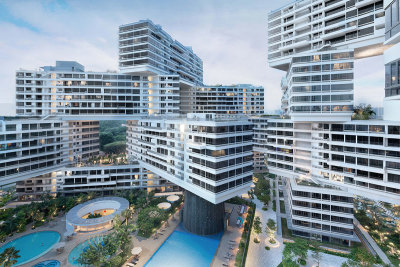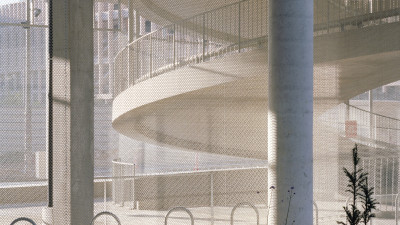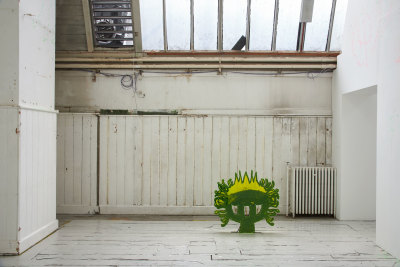The month in architecture
The month in architecture
Everything you need to know that happened in November
By Helena Cuss
Published 1 December 2015
The biggest architecture news, the weirdest new projects and the latest prizes – rounded up into one handy post each month.
-
Edinburgh’s world heritage status at risk
Scotland’s capital city, famed for its Georgian buildings and picturesque cobbled streets, is at risk of losing its Unesco world heritage status – which formally recognises it as one of the most beautiful cities in the world – because of the number and nature of new buildings going up around the city. The most recent to offend is a hotel which has been nicknamed “the Turd” by its detractors. This comes after controversy over plans to remodel one of Edinburgh’s most important neoclassical buildings, the old Royal High School on Calton Hill, which contributed towards Edinburgh’s Unesco status in the first place. After a barrage of complaints from the public and architecture experts, the International Council on Monuments and Sites, which advises Unesco, has this month sent inspectors to tour these sites of new development.
The Interlace wins at the World Architecture Festival
Architects OMA and Ole Scheeren have won the prize for World Building of the Year for The Interlace, a residential project in Singapore. Intended as a complete rethinking of how to build high-density community-led living, the building features a series of apartment blocks stacked diagonally across one another, creating, according to creator Eric Chang, a “vertical village” with a series of characterful landscaped courtyards which promote social connectivity. Bjarke Ingels Group won Future Project of the Year with twisted skyscraper Vancouver House in Canada, and the prize for Landscape of the Year was won by Turenscape International for Yanweizhou Park in China, a wetlands park with flood-resistance and wildlife habitats. See the winners on the World Architecture Festival 2015 website.
New Yorkers protest plans for super-tall buildings
A group of Manhattanites have finally had enough of the ever-lengthening shadows over their city, as the rise of the super tower has begun to impinge on the amount of sunlight in much-loved Central Park. Super-tall skinny skyscrapers containing luxury apartments, such as One57, has been casting shadows of up to 1.2km onto the park, plunging playgrounds, sports fields and the zoo into chilly shade, with more of these high-rise homes for the super-rich planned for the area. On 8 November activists marched down 57th Street in Manhattan brandishing black umbrellas in protest, calling for a temporary halt on development of towers higher than 600 feet while environmental and infrastructure studies are carried out. However, city authorities currently have no plans to halt development in this part of Manhattan. Visit the Stand Against Shadows campaign Facebook page.
-

Royal High School, Calton Hill, Edinburgh

The Interlace, Singapore, by OMA and Ole Scheeren

Design for Vancouver House, Canada
-
King’s Cross gas holders converted into park
The disused Victorian gas holders that stand sentinel over London’s canals may seem like monumental symbols of a bygone era of urban industrialisation, but some are getting a second chance at life. Architects Bell Phillips have converted the Grade-II listed Gasholder No. 8 into a park as part of the regeneration scheme for King’s Cross. Originally constructed in the 1850s, the frame has been moved from its original location in St Pancras to Regents Canal, and has been filled with a circular lawn and polished steel pavilion, which the architects hope “will become a much-loved public space”. Explore more of the King’s Cross development scheme.
PLP Architecture offer new concept for affordable London living
A London-based architecture practice has revealed plans for a high-rise residential block in East London which will provide “a model of housing called ‘co-living’ which is genuinely affordable to young people living and working in London", many of whom are forced into overpriced, substandard accommodation. The concept is based partially on student living, with 223 co-living apartments sharing kitchens, bathrooms and living spaces. Other benefits include a stage, drawing room, exhibition space, cinema and a library, alongside more standard amenities such as a spa, garden and gym. With views over the Olympic Park, The Stratford Collective’s creators believe it could point towards the solution for the housing crisis. Find out more about The Collective.
Last ditch attempt to save Brutalist Birmingham library
Such is the residents’ love of Birmingham Central Library that they have launched a last minute campaign to save it, despite the fact that demolition has already begun. Friends of the Central Library hope that the Christmas period will buy enough time for a newly submitted listing bid to be considered before major work begins. Built by architect John Madin in 1974, the library is considered by many to be a prime example of Brutalism, an architectural style of the 1960s and 70s borne from a socially progressive desire to provide affordable housing and amenities to war-destroyed Britain. However, the concrete aesthetic rapidly fell out of fashion in the 21st century, and has been steadily disappearing ever since, with many buildings of that era slated for demolition or destroyed. Similar Brutalist buildings by Madin have already been destroyed, including the Yorkshire Post in Leeds and Birmingham’s Post & Mail building. Before his death in 2012, the architect expressed disgust at plans to demolish the library in order to make space for commercial development.
-

Gasholder Park, King’s Cross, by Bell Phillips Architects

Design for The Collective, Stratford

Chamberlain Square with Birmingham Central Library, Birmingham

Design for Nine Elms Bridge, by Bystrup and Robin Snell
-
Winning design for Pimlico Bridge announced
Bystrup and Robin Snell have won the design competition for a new footbridge over the Thames connecting Pimlico to the north and Nine Elms to the south. They beat off stiff competition from other shortlisted architects, including Marks Barfield who designed the London Eye, for the unanimous support of a jury panel. The judges commended the design for its “light touch approach to landing points […] and the exploration of lighting and textured surfaces to manage movement across the bridge". However, residents on the Pimlico side of the proposed bridge are almost universally opposed to it, citing concerns that it will bring an estimated 18,000 extra commuters through their streets. The final design will need to secure planning permission from both Wandsworth and Westminster councils and the Mayor of London. Find out more about the Nine Elms Bridge.
Chancellor of the Exchequer pledges £7b to housing in Spending Review
George Osborne has announced a new target of delivering 400,000 “affordable” homes in England, which the Treasury has described as “the biggest affordable housebuilding programme since the 1970s.” The funds will be spread across “starter homes” for first-time buyers; 135,000 “Help to Buy: Shared Ownership” homes for households earning less than £80,000; 10,000 reduced rental homes which tenants can live in for five years whilst saving for a deposit, and 8,000 specialist homes for the elderly or disabled. Jane Duncan, president of the Royal Institute of British Architects, has warned the Chancellor that good design must be a guiding principle of the new development, ensuring that new homes are sustainable places people actually want to live in and which will last long into the future.










